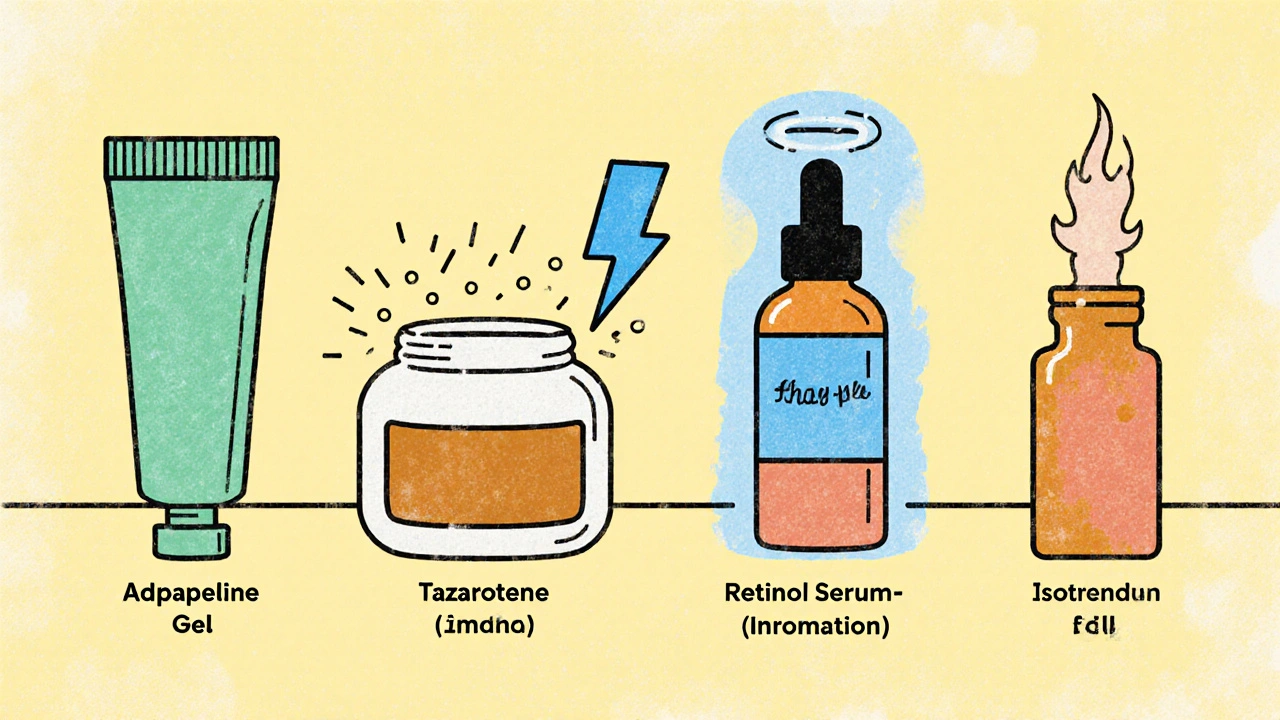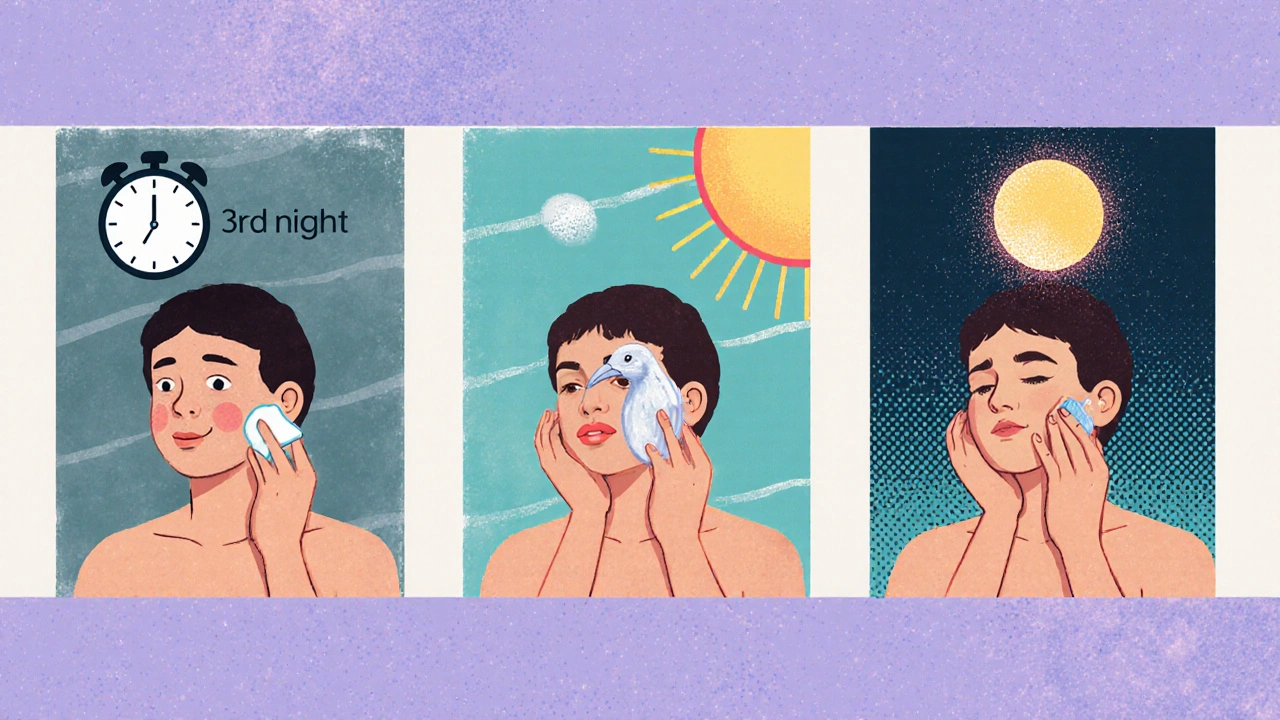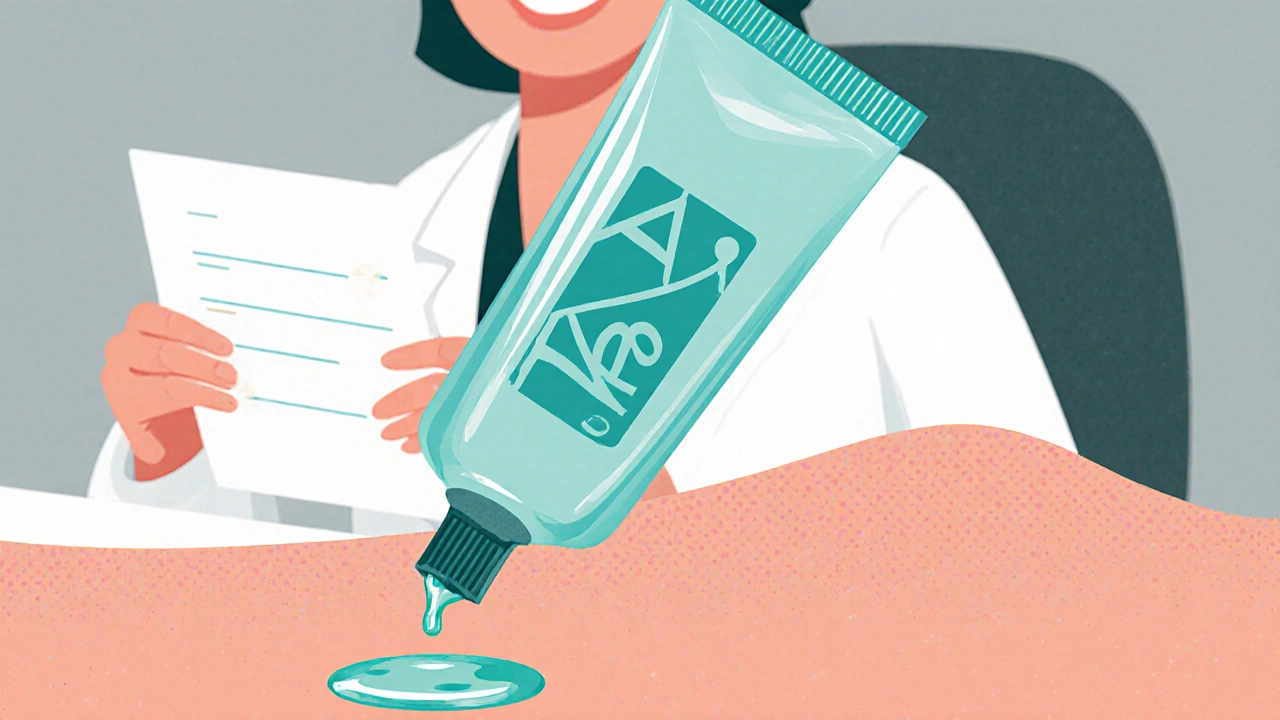Retinoid Selection Tool
Find Your Perfect Retinoid
Answer a few questions to get personalized recommendations based on your skin concerns, sensitivity, and budget.
Your Recommendation
When it comes to clearing acne, fading fine lines, or simply smoothing skin texture, retinoids dominate the conversation. A‑Ret Gel is a prescription‑only gel that delivers tretinoin, the gold‑standard retinoic acid, in a 0.05% concentration. But you don’t have to stick with one brand - the market offers a range of alternatives each with its own strengths and quirks. This guide walks through the most common rivals, compares them side‑by‑side, and helps you decide which formula fits your skin goals, budget, and tolerance.
What Makes A‑Ret Gel Unique?
Tretinoin is the pure, pharmacologically active form of vitamin A that binds directly to retinoic acid receptors in the skin. A‑Ret Gel’s formulation uses a polymer‑based vehicle that improves stability and reduces irritation compared with older cream bases. Key attributes include:
- 0.05% tretinoin concentration (the most common strength for acne and anti‑aging).
- Gel texture that feels light on oily skin but still provides adequate hydration.
- Prescription status in the UK and many other markets - meaning a dermatologist must evaluate suitability.
Because it’s a true retinoic acid, results can appear within 4‑6 weeks for acne and 8‑12 weeks for fine‑line improvement. However, the potency also leads to a higher chance of dryness, peeling, and the dreaded “retinoid reaction” if you start too aggressively.
Top Retinoid Alternatives at a Glance
Below are the most widely used retinoid options that people consider when A‑Ret Gel feels too strong, too pricey, or simply unavailable.
- Adapalene - a third‑generation synthetic retinoid marketed as Differin. It’s milder than tretinoin but still effective for comedonal acne.
- Tazarotene - a fourth‑generation retinoid available in 0.05% and 0.1% creams. It’s often prescribed for psoriasis and severe acne.
- Retinol - the over‑the‑counter (OTC) precursor that the skin converts to retinoic acid. It’s less irritating but also slower to act.
- Isotretinoin - an oral retinoid reserved for severe nodular acne; worth mentioning because it shows how powerful retinoids can be.
Side‑Effect Profile: How Do They Compare?
Everyone’s skin reacts differently, but the general trend follows potency. Here’s a quick rundown:
- A‑Ret Gel (tretinoin) - highest efficacy, highest irritation risk. Expect redness, peeling, and increased sun sensitivity during the first 2‑4 weeks.
- Adapalene (Differin) - moderate efficacy, lower irritation. Works well for beginners or people with sensitive skin.
- Tazarotene - very high efficacy for stubborn lesions, but also high dryness; often combined with moisturizers.
- Retinol - gentle, suitable for anti‑aging beginners. Results take longer (3‑6 months) but the side‑effect profile is mild.
- Isotretinoin - systemic side effects (dry lips, liver enzymes, teratogenic risk) far beyond topical considerations.

Cost Comparison
Price often decides which product you’ll stay with long‑term. Below is a snapshot of average monthly cost in the UK (2025 prices).
| Product | Strength | Prescription? | Typical Use | Average Monthly Cost (£) |
|---|---|---|---|---|
| A‑Ret Gel | 0.05% tretinoin | Yes | Acne, anti‑aging | £45‑£55 |
| Differin Gel | 0.1% adapalene | No (OTC) | Comedonal acne | £15‑£20 |
| Tazarotene Cream | 0.05% / 0.1% | Yes | Severe acne, psoriasis | £60‑£80 |
| Retinol Serum | 0.3%‑1% (varies) | No (OTC) | Anti‑aging, mild acne | £25‑£40 |
How to Choose the Right Retinoid for You
Below is a decision‑tree you can follow in plain English. No need for a flowchart graphic - just read the steps.
- Do you have a prescription? If you’re already seeing a Dermatologist, ask whether tretinoin (A‑Ret Gel) or tazarotene is warranted based on severity.
- If you’re a beginner or have very sensitive skin, start with Adapalene (Differin). Its lower irritation makes it ideal for daily use.
- If you’re focused on fine lines and can tolerate a bit of dryness, Retinol serum offers a gentle, long‑term anti‑aging route.
- For stubborn, cystic acne that hasn’t responded to other topicals, consider stepping up to Tazarotene - but be ready to commit to a robust moisturizing routine.
- Never combine oral isotretinoin with any topical retinoid without explicit medical supervision.

Practical Tips to Minimize Irritation
Regardless of which product you pick, the following habits lower the risk of burning and peeling:
- Start slow: Apply every third night for the first two weeks, then increase to every other night.
- Buffer with moisturizer: Apply a pea‑sized amount of retinoid, wait 10‑15 minutes, then layer a ceramide‑rich cream.
- Sun protection is mandatory: Use SPF 30+ daily; retinoids thin the stratum corneum, making UV damage easier.
- Avoid other actives: Skip benzoyl peroxide or salicylic acid on the same night until your skin acclimates.
- Patch test: Apply a small dab on the jawline for 3 days before full‑face use.
Summing It Up: When to Reach for A‑Ret Gel
If you need rapid results for moderate‑to‑severe acne, have previously tolerated retinoic acid, and can secure a prescription, A‑Ret Gel remains the most potent top‑line option. For those who balk at the cost or fear irritation, the step‑down alternatives-Adapalene or Retinol-provide a smoother learning curve. Tazarotene sits in the middle: higher potency than A‑Ret Gel for some cases, but it also demands diligent skin‑care support.
Can I use A‑Ret Gel and Differin together?
No. Both contain retinoids, and layering them dramatically raises irritation risk. Choose one product and stick with it until your skin adjusts.
How long does it take to see results with tretinoin?
Most people notice reduced comedones after 4‑6 weeks. Fine‑line smoothing typically requires 8‑12 weeks of consistent use.
Is retinol a good starter if I’m new to retinoids?
Yes. Retinol converts to tretinoin gradually, so it’s gentler on the skin. Expect slower results, but the lower irritation makes it ideal for beginners.
Do I need a prescription for tazarotene in the UK?
Yes. Tazarotene is a prescription‑only medication in the UK due to its potency and side‑effect profile.
What’s the best way to reduce peeling from tretinoin?
Introduce a moisturizer after the retinoid has absorbed, limit application to 2‑3 nights a week at first, and always wear sunscreen during the day.


Melanie Vargas
Hey folks! If you’re just starting out with retinoids, remember to patch‑test first and keep your skin moisturized – it makes the whole process way less scary 😊. Don’t forget sunscreen every single day, even when it’s cloudy!